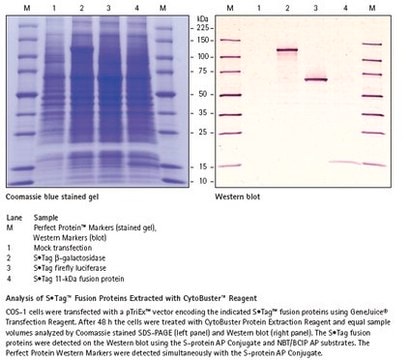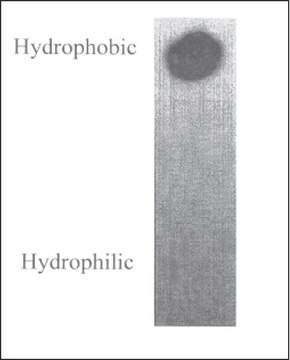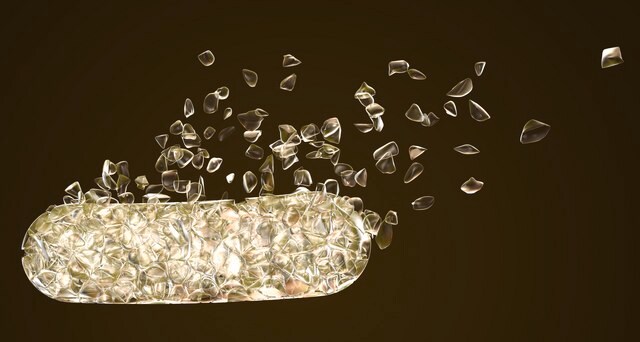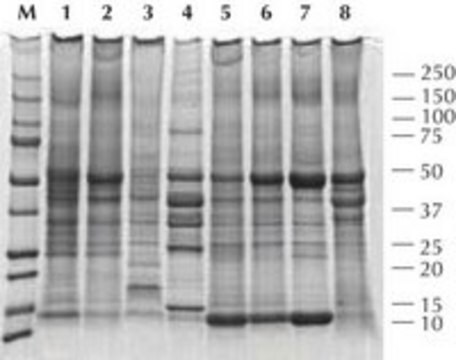C0356
Protein Extraction Reagent Type 4
Synonym(s):
Protein extraction solution
Sign Into View Organizational & Contract Pricing
All Photos(1)
About This Item
UNSPSC Code:
41116012
NACRES:
NA.56
Recommended Products
form
solid
solubility
deionized water: 13.6 g /15 ml at 25 °C, clear to hazy
General description
Protein Extraction Reagent Type 4, is a highly premixed, prequalified and effective protein solubilization and extraction reagent composed of urea, thiourea, Trizma®, and detergent C7BzO (C0856).
Application
Protein extraction reagent type 4 is optimized for proteomic studies. Cellular and organelle membrane solubilizing reagent is ideal for protein extraction prior to isoelectric focusing and 2D electrophoresis. Reducing and alkylating reagents TBP (T7567) and iodoacetamide (A3221) are recommended for use with this reagent. Protein extraction reagent type 4 is also available as a component of the ProteoPrep® Sample.
Components
Contains urea, thiourea, Trizma®, and detergent C7BzO (C0856).
Legal Information
ProteoPrep is a registered trademark of Merck KGaA, Darmstadt, Germany
Trizma is a registered trademark of Merck KGaA, Darmstadt, Germany
Signal Word
Warning
Hazard Statements
Precautionary Statements
Hazard Classifications
Acute Tox. 4 Oral - Aquatic Chronic 2 - Carc. 2 - Repr. 2
Storage Class Code
11 - Combustible Solids
WGK
WGK 3
Flash Point(F)
Not applicable
Flash Point(C)
Not applicable
Personal Protective Equipment
dust mask type N95 (US), Eyeshields, Gloves
Certificates of Analysis (COA)
Search for Certificates of Analysis (COA) by entering the products Lot/Batch Number. Lot and Batch Numbers can be found on a product’s label following the words ‘Lot’ or ‘Batch’.
Already Own This Product?
Find documentation for the products that you have recently purchased in the Document Library.
Meritxell Pérez-Hedo et al.
Proteome science, 10(1), 58-58 (2012-10-02)
Sesamia nonagrioides is a noctuid that feeds on maize, sugar cane and sorghum in North Africa and Southern Europe. Larvae reared under long day conditions pupate after 5 or 6 larval instars, whereas larvae reared under short day conditions enter
John McCarthy et al.
Journal of proteome research, 2(3), 239-242 (2003-06-20)
Carbamylation is widely quoted as being a problem in 2-D gel analysis and the associated sample preparation steps. This modification occurs when iso-cyanate, a urea break-down product, covalently modifies lysine residues, thus inducing a change in isoelectric point. Urea is
Chawalit Kocharunchitt et al.
Molecular & cellular proteomics : MCP, 11(1), M111-M111 (2011-10-20)
An integrated transcriptomic and proteomic analysis was undertaken to determine the physiological response of Escherichia coli O157:H7 Sakai to steady-state conditions relevant to low temperature and water activity conditions experienced during meat carcass chilling in cold air. The response of
Ariadna Peremarti et al.
BMC genomics, 15, 125-125 (2014-02-14)
Leaf pigment content is an important trait involved in environmental interactions. In order to determine its impact on drought tolerance in wheat, we characterized a pale-green durum wheat mutant (Triticum turgidum L. var. durum) under contrasting water availability conditions. The
Gabriel A Grilo et al.
Journal of molecular and cellular cardiology, 139, 62-74 (2020-01-25)
Age-related remodeling of the heart causes structural and functional changes in the left ventricle (LV) that are associated with a high index of morbidities and mortality worldwide. Some cardiac pathologies in the elderly population vary between genders revealing that cardiac
Our team of scientists has experience in all areas of research including Life Science, Material Science, Chemical Synthesis, Chromatography, Analytical and many others.
Contact Technical Service











